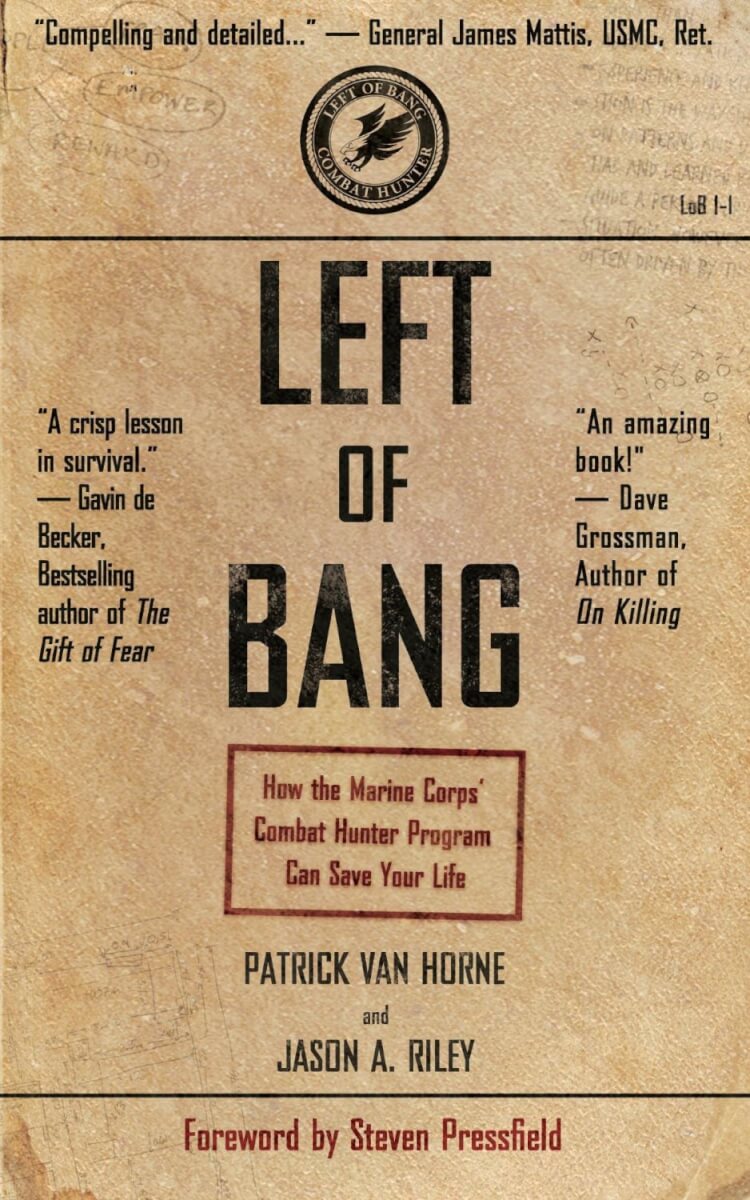Profiling. You’ve heard of it, mostly as a technique used by law enforcement and security personnel to distinguish individuals who are more likely to be involved in criminal or potentially threatening acts.
That type of profiling is primarily based on the “looks like a duck, acts like a duck, must be a duck” approach and gut feeling theory. It’s also considered very un-PC and is condemned in some circles. Those same circles will say there is little basis in science to show that profiling is at all effective.
Left of Bang contradicts that position with both science and plenty of anecdotal evidence. The book is about profiling, but not the type that makes critics disparage it as biased due to race, ethnicity, or religion. This is profiling based on human nature—and that is universal.
Combat Profiling
The term, “combat profiling,” was developed for the USMC Combat Hunter training program. Combat profiling is not about taking action based on appearances—or, at least, not based entirely on appearances. It is more about honing your senses and taking appropriate action based on the subtle clues provided by the behavior of those in your environment.
Combat profiling is understanding what your gut is telling you, such as knowing that a suspect’s hands patting or touching his waistband is an indicator of a concealed weapon or that the nervousness and discomfort exhibited by a car’s driver might mean more than just a reaction to being questioned.
For a police officer or a soldier, these could be life-saving observations, but recognizing how what he saw tipped him off also allows him to articulate and justify his actions in later reports. For a civilian, it might be as simple as recognizing that a fight is about to break out and have sufficient time to get out of the way.
“ … reading it will give you insight for practicing the techniques that might save your life.”
Profiling and Survival
What does profiling have to do with prepping and survival? Combat profiling is, at its most basic, about situational awareness. During a natural or manmade disaster, being situationally aware might mean the difference between life and death. For instance, had the victims been more situationally aware, the shooting that took place on live TV in August of 2015 might have had a different outcome. Part five, section five of Left of Fire—“Staying Left of Bang: Attacks From Within”— specifically covers “green on blue” incidents, or workplace violence.
The book’s title refers to avoiding a negative outcome by taking action before the bomb goes off, rather than via after-the-fact, Monday-morning quarterbacking. Think of the number line used in math class to teach positive and negative numbers: 0 is the “bang,” so any actions taken on the negative number side of the 0 are “left of bang.”
Parts one and two of the book cover the basics of what combat profiling is and why it is necessary; parts three, four, and five get to the how-to details. This is most definitely a textbook; reading it will give you insight for practicing the techniques that might save your life.
How many times have you felt that “something wasn’t right,” yet only recognized that feeling retroactively? Learning what the authors have to teach can help you act on that feeling—“left of bang”—rather than wondering later what you might have done differently.
Left of Bang
Patrick Van Horne and Jason A. Riley
Source: amazon.com
MSRP: $17.16
Editor’s note: A version of this article first appeared in the December 2015 print issue of American Survival Guide.



